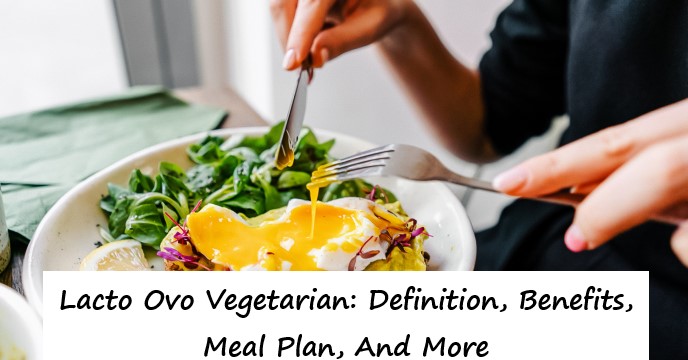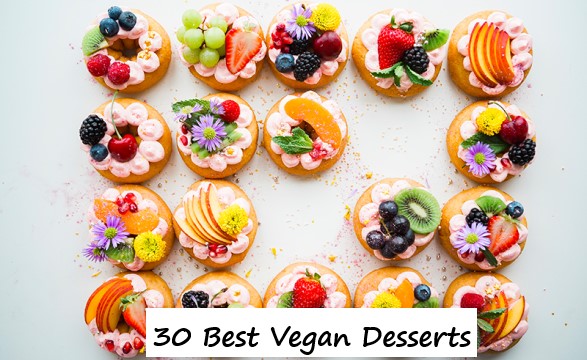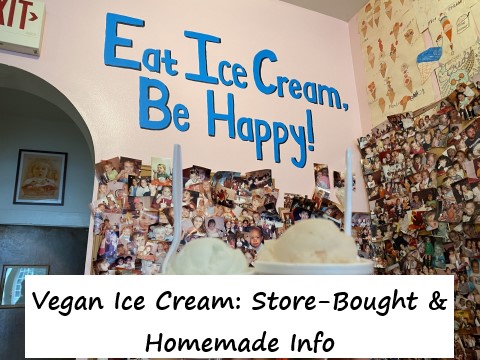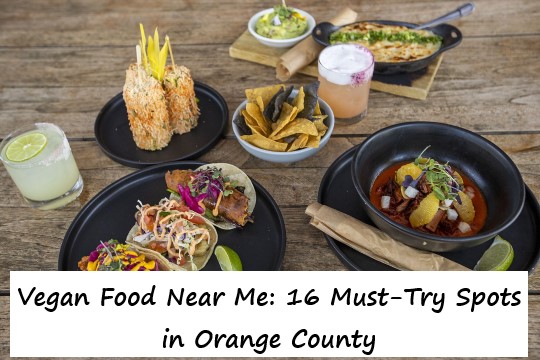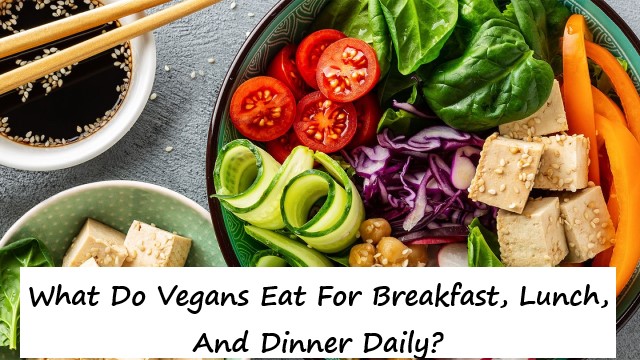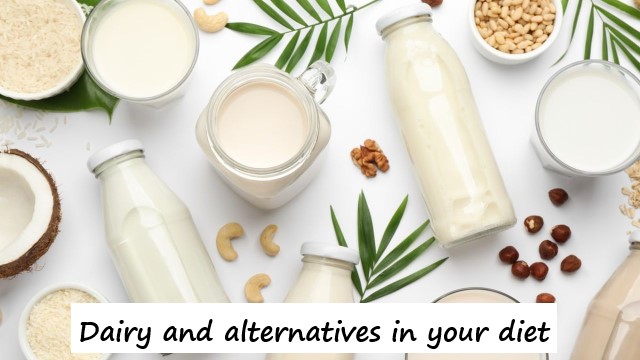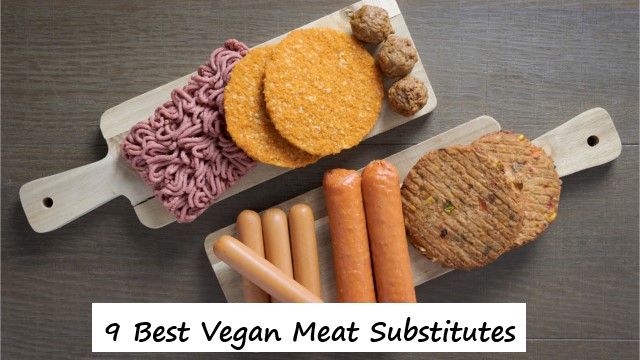Whether you’re a lifelong vegetarian and want to mix up your usual rotation of vegetarian dinner recipes, or are an omnivore wondering “what can I make for dinner if I have no meat?”, we’re betting that you’ll find what you’re looking for here! We’ve rounded up 60—count ‘em! 60!—of the very best vegetarian meals. From a 15-minute mac and cheese to a super-healthy, vegan hummus bowl and just about everything in between, we just know that you’ll find more than a few meatless recipes in this website https://bombaysandwichco.com/ to love.
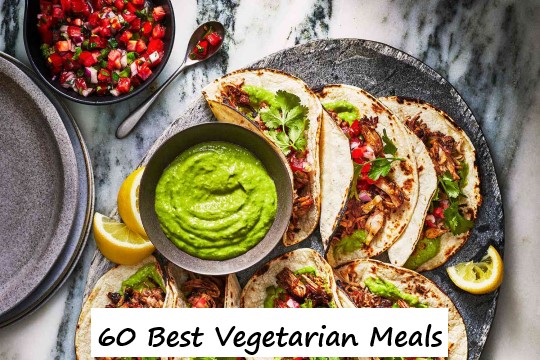
Healthy Vegetarian Meals
- Walnut-Lentil Bolognese. Boldly flavored, super hearty and incredibly easy, this vegan walnut and lentil bolognese recipe takes your plant-based eating goals to new heights.
- Vegetable Soup. Just pair this vegetarian vegetable soup with some good bread or toast and you’re good to go.
- Vegan Roasted Sweet Potato Salad. Roasted sweet potatoes, avocado, black beans and raw kale are tossed in a creamy, lime dressing in this brightly flavorful, vegan sweet potato salad recipe.
- Shaved Brussels Sprout Salad with Creamy Maple Dressing. Loaded with nuts, as well as dried and fresh fruit, this hearty vegetarian salad makes a great light, healthy lunch.
- Vegetarian Burrito Bowl with Avocado Crema. Roasted veggies, savory beans and a lime-garlic avocado crema top a bed of cilantro-lime rice in this hearty, healthy vegetarian burrito bowl recipe.
- Green Curry Buddha Bowl. Finished with a creamy green curry sauce, this veggie-loaded vegan bowl is the healthiest thing you’ll ever love.
- Creamy Goat Cheese Polenta With Ratatouille. Ratatouille—a classic combination of late summer vegetables, cooked to tender perfection—is an ideal partner for creamy goat cheese polenta. Together, they’re the vegetarian dinner of your dreams!
- Curried Cauliflower Quinoa Salad. This loaded salad is hearty and filling, and topped with an irresistible yogurt-tahini dressing.
- Curried Pumpkin Soup. Velvety smooth and brilliantly hued, this creamy vegan pumpkin curry soup recipe is deeply beloved in our homes.
- Spring Salad With Barley and Lemon Chive Vinaigrette. Dressed with a chive vinaigrette, crunchy sunflower seeds and tart cranberries, this recipe is an edible celebration of the cusp of spring.
- Roasted Cauliflower and Hummus Bowl. Za’atar roasted cauliflower, roasted chickpeas and creamy hummus make this low-carb vegan bowl recipe delicious, filling and loaded with protein.
- Butternut Squash Soup. Creamy butternut squash soup made with sweet apples, garlic, and thyme is the perfect cozy, light dinner.
Super Quick Vegetarian Meals
- Instant Pot Mac & Cheese. Mac & cheese is pure vegetarian comfort food, and this one is ready in just 15 minutes.
- Sesame-Garlic Ramen Noodles. Use a pack of instant ramen noodles to whip up sesame garlic ramen noodles that taste restaurant-worthy but come together in about ten minutes.
- Perfect Grilled Cheese. It always comes back to grilled cheese. Lunch, dinner, snack-time—this one is a no-fail crowd-pleaser.
High-Protein Vegetarian Meals
- Tofu Lettuce Wraps. Soy sauce, lime juice and a little chili paste make a simple, delectable sauce for these easy low-carb vegetarian tofu lettuce wraps.
- Braised Chickpeas with Chard. Smoked paprika and jarred marinara sauce punch up a simple vegan dinner of tomato-y braised chickpeas with chard. Healthy, fast and high in protein, it ticks every box.
- Tofu Stir-Fry with Peanut Sauce. Cooked quickly at high heat and drizzled with lots of homemade peanut sauce, this stir-fry is a wildly flavorful celebration of how delicious a plant-based dinner can be.
- Vegetarian Meatballs. Savory and sooo satisfying, these delicious, lentil-based vegetarian meatballs are a fast favorite. Plus, they freeze well!
- Kung Pao Tofu. With crunchy cashews and lots of veggies doused in a healthy dose of spicy Kung Pao sauce, this quick vegetarian recipe really hits the spot.
- Lentil Soup with Quinoa and Mushrooms. French green lentils—the “caviar” of lentils—lend a toothsome bite to this protein-rich, vegan lentil soup with quinoa and mushrooms.
- Falafel. Ever notice that the best vegan recipes are the ones that are accidentally vegan? As in, no ingredients posing as a faux version of something meaty or cheesy? Falafel is just exactly that kind of meal.
- Vegetarian Chili. Whether you’re just dipping a toe into the world of plant-based eating, are a long-time vegan, this sweet potato-studded, smoky chili recipe is guaranteed to more than satisfy.
Low-Carb Vegetarian Recipes
- Cauliflower Curry. Easy, rich, creamy and warmly-spiced this 30-minute vegetarian cauliflower-loaded coconut curry redefines comfort food.
- Coconut Curry Lentil Soup. A creamy, rich coconut curry broth loaded with veggies makes this coconut curry lentil soup the perfect 30-minute, one-pot dinner. Oh, and P.S. it’s vegan!
- Coconut Curry Zoodle Ramen. This coconut curry ramen is sure to become your new go-to weeknight dinner. Thanks to a few easy shortcuts, it comes together super fast.
- Mediterranean-Style Zucchini Fritters with Tzatziki Dipping Sauce. We think that it’s high time more people made room in their hearts for these Italian-ish (parmesan!), Greek-ish (hello tzatziki!) crispy zucchini fritters.
- Mushroom Alfredo Cauliflower Gnocchi. This vegetarian recipe comes together in minutes thanks to an ingredient list that’s only 3 items long. Thanks, Trader Joe’s!
- Cream of Mushroom Soup. This naturally vegetarian recipe will have you falling in love with this classic earthy, savory soup all over again (and ditching that canned stuff for good)
- Vodka Sauce and Green Bean Cauliflower Gnocchi. The only thing more luxurious than gnocchi with vodka sauce for dinner is pasta with gnocchi with vodka sauce that takes just ten minutes to make!
- Vegetable Curry Soup. This creamy curry soup is rich and creamy—thanks to a silky coconut milk broth—and loaded with hearty vegetables like carrots, broccoli, mushrooms, and eggplant, and fragrant spices like ginger and garam masala.
- Vegan Cauliflower Gnocchi with Kale-Cashew Pesto. Hearty, healthy and vegan, this ten minute cauliflower gnocchi dinner is almost too good to be true. Almost.
- Cauliflower Pizza Crust. Because we love a challenge, we figured out how to make a Trader Joe’s-inspired cauliflower pizza crust at home!
30-Minute Vegetarian Meals
- Creamy Curry Noodles with Crispy Tofu. Fresh, toothsome udon noodles team up with red curry paste and rich, silky coconut milk to become a bowlful of vegetarian dinnertime bliss.
- Baked Gnocchi with Broccoli. Cheesy, gooey, hot and bubbly—this one-pan baked gnocchi with broccoli is 100% pure certified vegetarian comfort food that any omnivore would also happily gobble down.
- Wild Mushroom Risotto. Our easy-peasy wild mushroom risotto recipe is so richly flavorful you’ll want to find any excuse to make it again.
- Pasta with Tomato Cream Sauce. Regular old canned tomatoes—both tomato sauce and crushed tomatoes, actually—and fresh basil get the luxury treatment in this quick vegetarian dinner recipe.
- Creamy Zucchini Pasta. A big bowl of this silky, rich pasta—nope, we don’t mean zoodles! We mean real, carb-o-licious pasta—is really hard to beat.
- Broccoli Pesto Pasta. This recipe is a thing of logistical beauty. A stock pot of boiling water + simple ingredients come together to make a healthy, quick, satisfying supper everyone can feel good about.
- Rigatoni with Mushroom Cream Sauce. A buttery, rich cream sauce made even more decadent with the addition of earthy mushrooms—what’s not to love?
Easy Vegetarian Dinner Ideas
- Coconut Curry Ramen. Using just one pot and (instant!) ramen noodles—just the noodles, toss that sodium-bomb flavor packet—makes this vegetarian coconut curry ramen a quick vegetarian dinner
- Crock-Pot Vegetable Lasagna. Fresh basil, tons of veggies, and three cheeses brighten up jarred pasta sauce and no-boil noodles in this super easy Crock-Pot vegetable lasagna.
- Roasted Cauliflower Tacos. Everything’s better served in a warm tortilla and paired with avocado, which is why we’re currently obsessed with this super simple cauliflower taco recipe.
- Creamy Roasted Red Pepper Pasta. If you’ve got ten minutes and can open a jar, you can make this tonight.
- Three-Ingredient Tomato Sauce. Olive oil, salt, fresh tomatoes, and a little time are all it takes to create the most vibrant fresh tomato sauce recipe that’s ever emerged from the TMP test kitchen.
- Vegetarian Stuffed Peppers. Brimming with a taco-seasoned, cheesy bean-and-rice filling, this is an easy, healthy dinner that’s sure to spice up your week.
- Hungarian Mushroom Soup. Paprika-tinged and soothing, there’s something uniquely cozy about this creamy mushroom soup.
- 4 Cheese and Mushroom Rolled Lasagna. Loaded with four kinds of cheese, savory mushrooms, and plenty of garlic (duh), this easy, cheesy rolled lasagna is a modern vegetarian classic.
- Classic Baked Macaroni and Cheese. This recipe is a throwback to a childhood classic with an extra cheesy, velvety sauce and all the crispy crusty parts everyone will fight over.
Vegetarian Sheet Pan Dinner Recipes
- Sweet Potato Tacos. Loaded with tangy slaw and black beans, these easy sweet potato tacos are the comforting vegetarian dinner that Meatless Monday dreams are made of.
- Portobello Mushroom Fajitas. A healthy, fast, vegetarian sheet pan dinner is as easy and delicious as can be—meet our veggie-loaded portobello mushroom fajitas!
- Sheet Pan Quesadilla with Jalapeño Ranch. Stuffed with cheese and avocado, this giant, melty, upgraded cheese sheet pan quesadilla is so crazy good.
- Apple, Caramelized Onion and Spinach Quesadilla. We favor baked quesadillas—as opposed to those cooked on the stove-top—simply because it’s so easy to make a bunch of them at the same time if you bake them in the oven.
The Best Vegetarian Breakfast Recipes
- Huevos Rancheros. Runny, fried eggs over a bed of seasoned beans—homemade huevos rancheros are a no-brainer vegetarian breakfast.
- Spinach Mushroom Strata. Swiss cheese and buttery mushrooms make this savory, earthy spinach strata recipe your new weekend brunch-at-home favorite.
- Migas. This Tex-Mex classic plays nice with whatever it’s served with—be it waffles or home fries, hash browns or pancakes—and we cannot get enough.
- Caramelized Onion Frittata. Heavy cream helps this vegetarian frittata stay tender, light and bouncy.
- Salsa Verde Baked Eggs. With just two main ingredients, a vegetarian main dish does not get simpler than this satisfying breakfast recipe.
- Tomato, Basil & Caramelized Onion Quiche. With heirloom tomatoes, fresh basil, a shaving of Parmigiano-Reggiano, and onions caramelized to perfection, this is the be-all end-all of quiche recipes.
- Five Onion Tart with Arugula Salad. This sweet little tart makes a wonderful vegetarian meal any time of the day.
